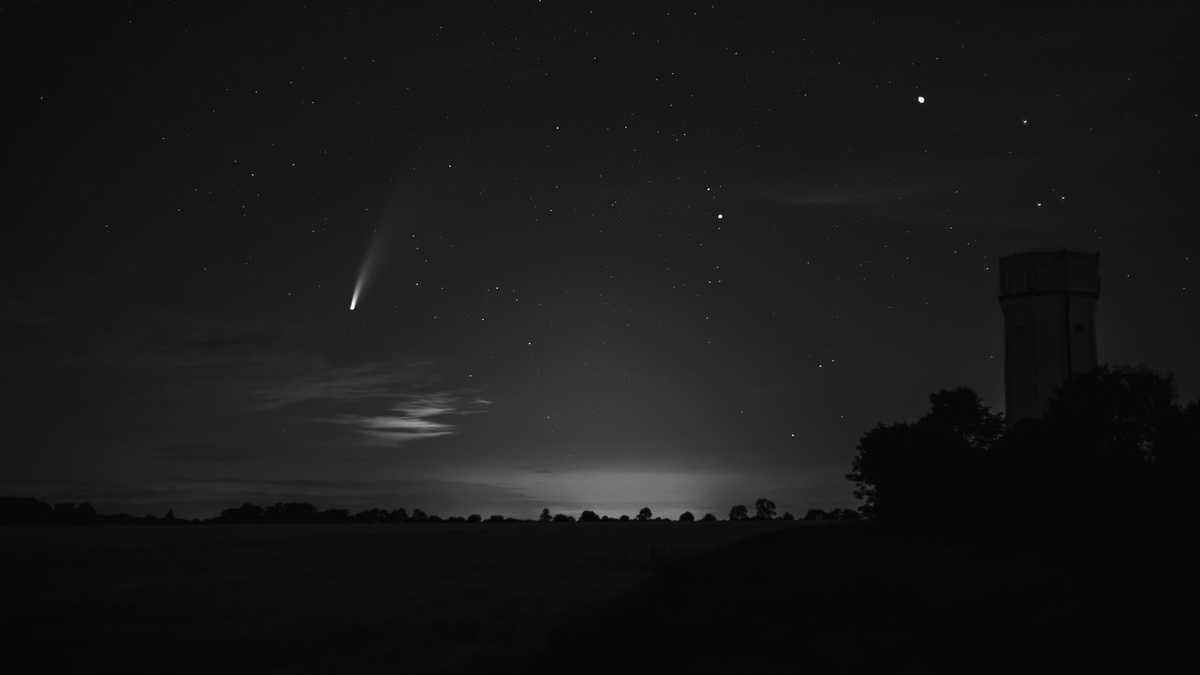Truth & Goodness
4,000 Space Mirrors Could Light Up Earth. Is It Day or Disaster?
04 December 2025

When a bright flash lights up the night sky, many people grab their phones. Videos and speculation quickly appear online: Is it a meteor, a comet, a satellite, or maybe an old rocket? Although these phenomena can look similar, they differ in origin and behavior – and with a little knowledge, you can tell them apart.
Imagine a peaceful summer evening. You’re coming home from work or sitting on your balcony when suddenly a bright, streaking fireball appears in the sky. This lasts only a few seconds, but the impression is immense. Within minutes, recordings, photos, and speculation appear online. Some are certain it’s a meteor. Others bet on a rocket launch or a falling satellite. Can you independently identify what just flew over your head? As it turns out, yes – you simply need to know the basic differences between meteors, comets, rockets, and space debris. Each of these phenomena leaves a slightly different trail against the stars. Therefore, night sky observation is not just a pleasure, but also an opportunity for scientific curiosity.
Although we call them “shooting stars,” these are actually tiny dust particles or small pebbles that enter Earth’s atmosphere at enormous speeds, sometimes tens of kilometers per second. Air friction causes them to burn up at altitudes over 50 km, leaving behind a brief streak of light. The entire event lasts no longer than a second.

However, larger objects, known as bolides, do occur. They are brighter, can last up to a dozen seconds, and often accompany a loud boom. This results from a shockwave that propagates after they enter the lower atmosphere. One of the most famous cases was the Chelyabinsk bolide in 2013. Its brightness was so intense that people instinctively covered their eyes, and the explosion generated shockwaves that shattered thousands of windows in nearby towns.
Bolides can have various colors, which depend on the cosmic rock’s chemical composition. Green suggests the presence of magnesium, orange indicates sodium, and a bluish tint might point to calcium. If fragments of the object reach Earth, they become meteorites, which are valuable to scientists. So, night sky observation can surprise you not only with its beauty but also with the knowledge you can gain from it.
Read more: Mysterious Cosmic Object in Space: A Perfect Sphere Stuns Astronomers
People often depict comets as fiery balls with a trailing tail, but this is a misleading image. Their movement from Earth’s perspective is very slow and practically imperceptible to the naked eye. They are hundreds of thousands of kilometers away from us; consequently, their light appears diffused and subtle.
Sometimes you can spot comets, especially the brightest ones, but their image is more like a delicate smudge with a faint streak, rather than a dynamic fireball. So, if something bright and fast streaks across the sky, there’s no doubt – it was not a comet. Night sky observation allows you to discern these subtle differences.
Increasingly, bright phenomena in the sky originate not from natural bodies but from human civilization’s creations. We are talking about space debris, which includes remnants of rockets, defunct satellites, and other orbital objects that re-enter the atmosphere after years. Although they may resemble meteors from a distance, they move much slower, at about 8 km/s. This is considerably less than typical bolides, allowing for longer observation times, sometimes up to a minute. This extended duration makes them easy to record.
“Space debris enters the atmosphere almost horizontally, following Earth’s curvature. Their slow pace and long light trail make them easy to record and post online,” explains Professor Jonti Horner from the University of Southern Queensland in an interview with The Conversation.
Moments of disintegration are particularly spectacular. Sparks and fragments appear, and sometimes even colorful traces from burning various materials, like aluminum or steel, become visible. Night sky observation during such moments can resemble a spectacle worthy of a science fiction film.
Rocket launches represent yet another case. Their liftoffs and transits can produce spectacular effects, not necessarily related to noise or smoke. In the upper atmosphere and vacuum, rockets leave behind trails of gases that, under suitable conditions, create mesmerizing spirals or plumes.
Sometimes, these phenomena are visible from hundreds of kilometers away, even in locations distant from the launch base. Some resemble strange nebulae or bright, moving clouds. In such instances, night sky observation becomes pure magic – both technological and visual.
Every streak of light in the sky can mark the beginning of a scientific adventure. With a little knowledge, you can independently identify what just crossed the sky. And the best part is that night sky observation is accessible to everyone. You don’t need a telescope; just curiosity and perhaps a bit of luck.
Recommended: Stunning Mars Photo: The Red Planet Looks Almost Like Earth